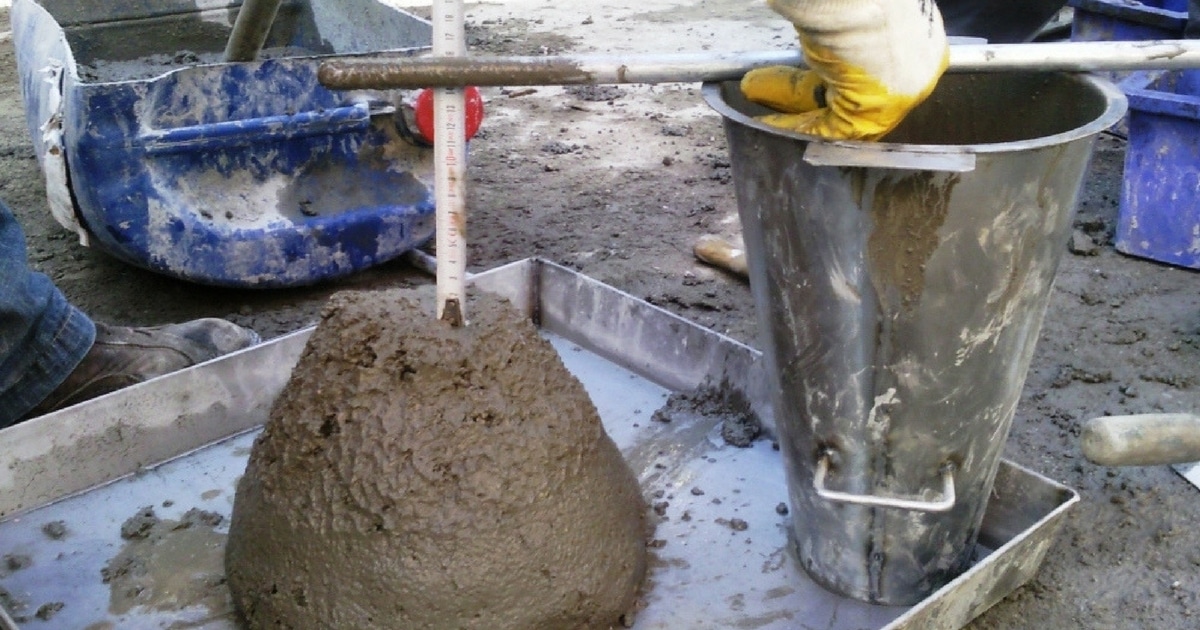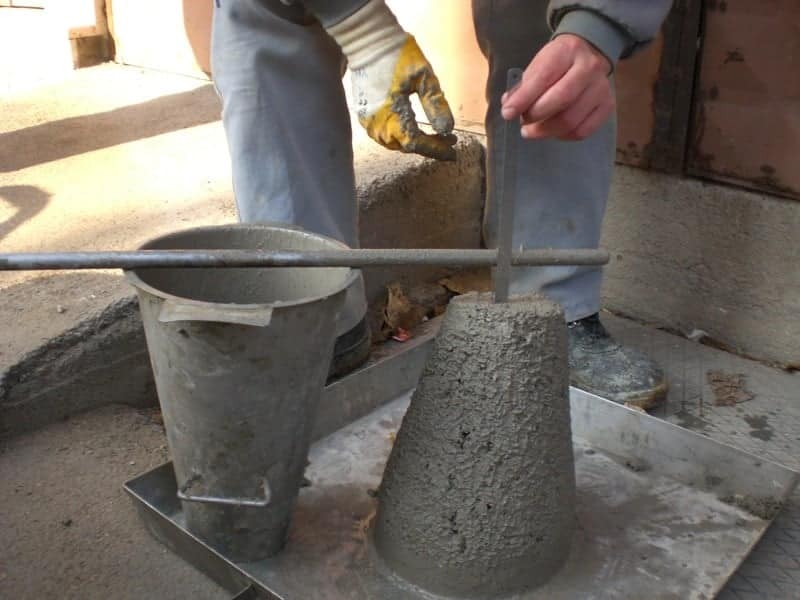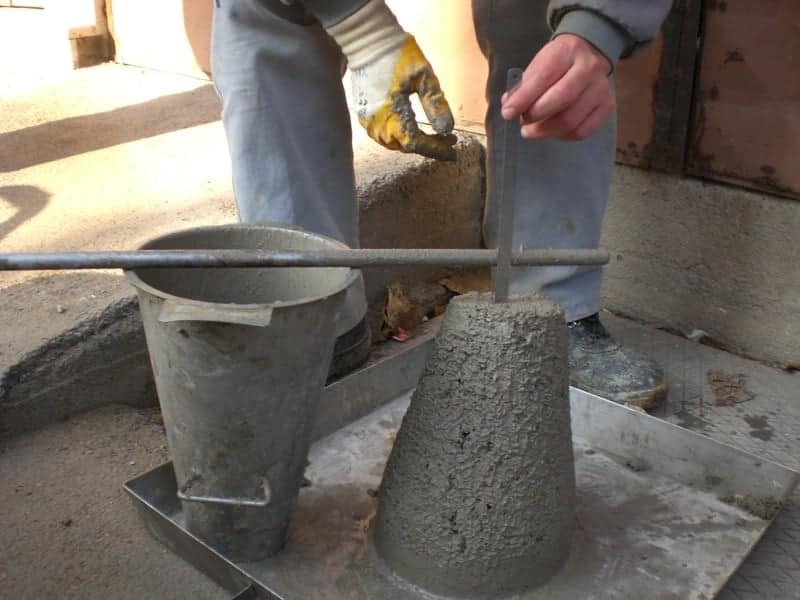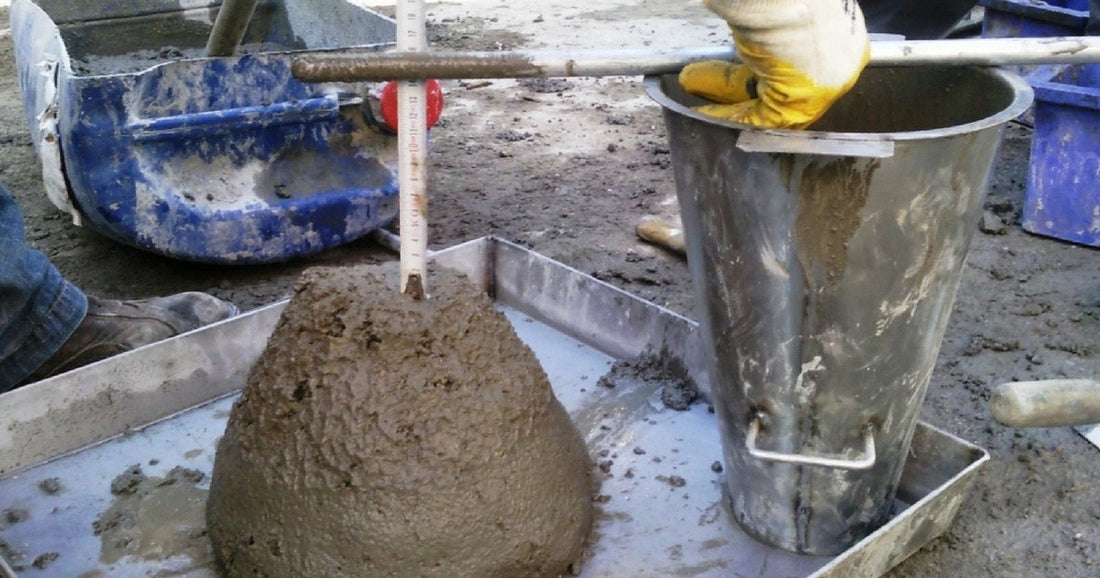The concrete slump test is a measure of the workability of concrete. It is the only indicator used to determine the condition of concrete until its strength is tested.
It provides several clues about the condition of the concrete. Some of the following may be considered along with drop testing.
- A low slump indicates low workability of the concrete. If the concrete has low workability, this is an indication of a problem with the concrete.
- If the slump is very high, this may be due to the high water content. The cause may also be the use of highly effective water-reducing additives and too high a dosage.
- A low slump that is not within the limit may be due to low water content. Furthermore, checking the degree of shedding after a long period of time may also reveal a low degree of shedding.
- The use of highly effective water-reducing additives can also lead to a rapid decrease in shedding after a certain period of time.
- Additionally, the texture of concrete tested at low slump could also be used to determine problems with the concrete.
Therefore, it is very important to carry out the slump test of the concrete mix.


How to Test Concrete Spread Level
To perform a concrete slump test, the following procedure can be followed.
- All concrete mixers are drop tested. This happens in the concrete mixing plant and on the construction site.
- Place the cone on a flat, non-shedding surface. If the concrete slump test is carried out on site, a steel plate may also be used.
- The cone must be filled in three layers (steps) and each layer must be compacted with 25 blows.
- Once the cone is filled, remove excess concrete and level the top surface. Also remove any concrete that has fallen around the cone.
- Slowly lift the cone until it clears the concrete and place it next to the concrete. The cone is usually placed upside down.
- Place the rod in the cone and measure the distance between the rod and the concrete. This is the spreading dimension of the concrete.
Let's look at the behavior of break-ins
Types of robberies
Basically four types of concrete sagging can be observed.


- True robbery
The concrete takes the same shape as the cone and presents a certain amount of slump. This is visible in most cases and true slump within the acceptable range specified in the mix composition can be used for construction.
- No break-in
The concrete follows the same shape as the cone and there is no significant movement in the vertical direction.
Depending on the type of construction and concrete mix information, the concrete mix is accepted or rejected.
- Shear sagging
The top part of the concrete collapses during shear. This may be due to the low cohesion of the concrete.
Furthermore, the increased workability of concrete during the slump test can also lead to this type of collapse.
- collapse
Complete collapse of concrete is called collapse sagging. This may be due to the greater workability of concrete.
Higher water content, the problem with mix used for concrete, etc. could be the reason for this type of problems.
If the concrete does not meet the slump limit specified in the concrete mix, it is generally rejected. Concrete with a slump limit exceeding the specified limit generally cannot be used.
However, low-slump concrete with added additives can be modified by new dosage, if permitted by the product specification. Furthermore, it must be ensured that the maximum permitted dosage has not been reached.


Standards for concrete slump test
- British standards, slum testing can be carried out according to the following standards
BS 1881-102
- According to European standards, concrete slump can be as
EN 12350-2 standard
- According to ASTM standards, a concrete slump test can be performed in accordance with
ASTM C143
Factors Affecting Concrete Sagging
The following factors have the greatest influence on the fluctuation of concrete slump.
- Material properties
Types of aggregates used and their grain size, shape, etc.
- Additions
Additives have a great influence on the strength and workability of concrete.
Generally, superplasticizers are used as highly effective water-reducing additives to achieve the required workability of concrete. Using the additive without experimental testing or in overdose can lead to problems with the workability of the concrete.
- Percentage of air trapped in concrete
- Concrete time
The time is measured after mixing the concrete.
- water content
Depending on the purpose of the concrete, there are different slump classes and the same concrete mix is used. During construction we need to ensure that the specified abatement value is achieved.

